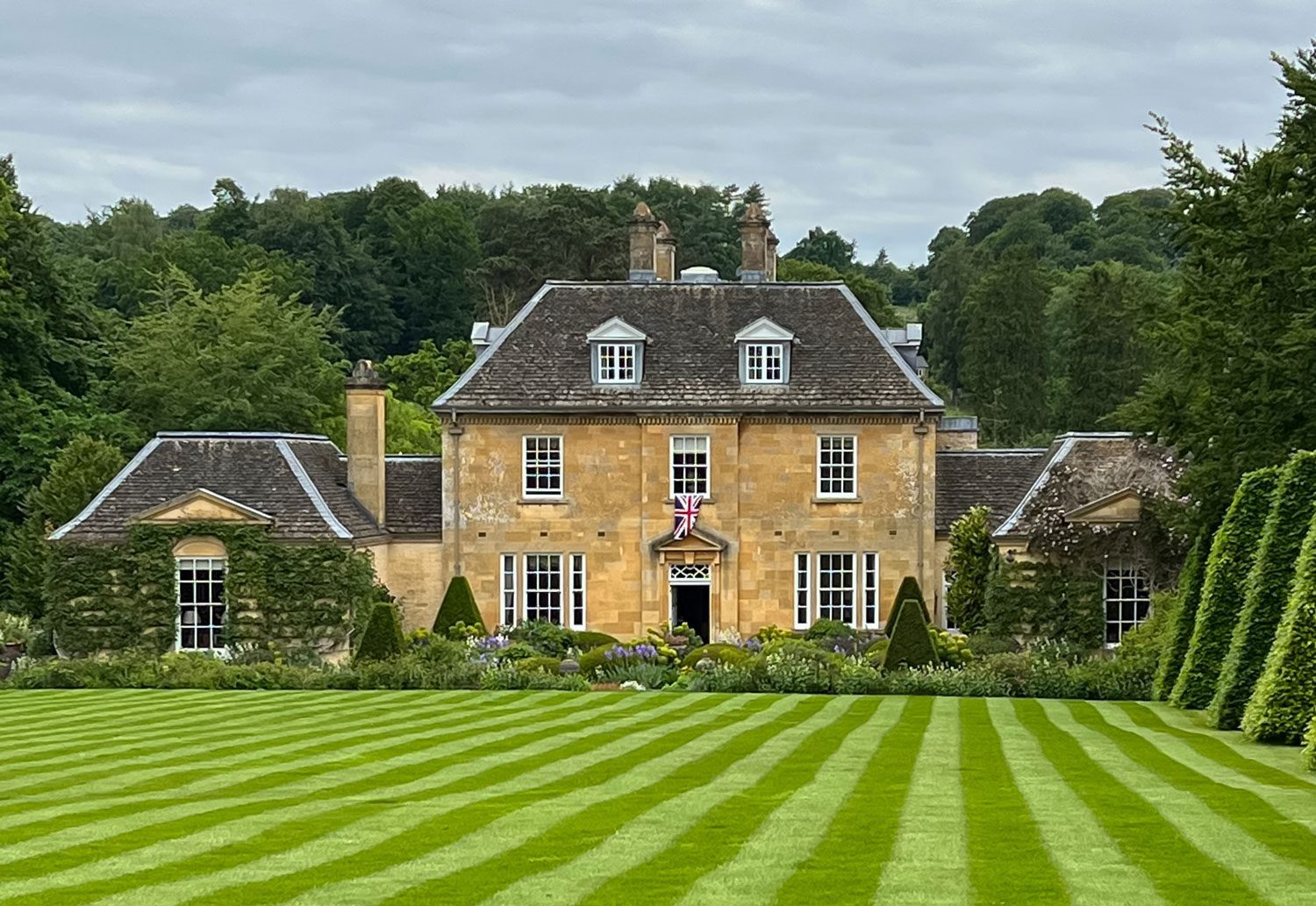
With the elegant, bounteous ‘Limelight’ hydrangea border celebrating the last horticultural hurrah at Parterre, the ritual of “putting the garden to bed” commences. The long list of “to-dos” includes an important one with my name on it — projects, design details, and additions/deletions to the garden as it enters its 24th year.
It’s now time to review those notes I started when visiting Cotswold properties last May and the seemingly thousands of pictures I took. One garden stands out for me and well-deserves its own blog — Rockcliffe. An intensively cultivated, private garden in Cheltenham, seldom open to the public, the chatelaine graciously acceded to share this with me, a fellow obsessed gardener whose garden is also open at times. The fact that later in the week they were prepping for a family wedding and then a large party in honor of the Queen’s Jubilee, made this opportunity all the more special.
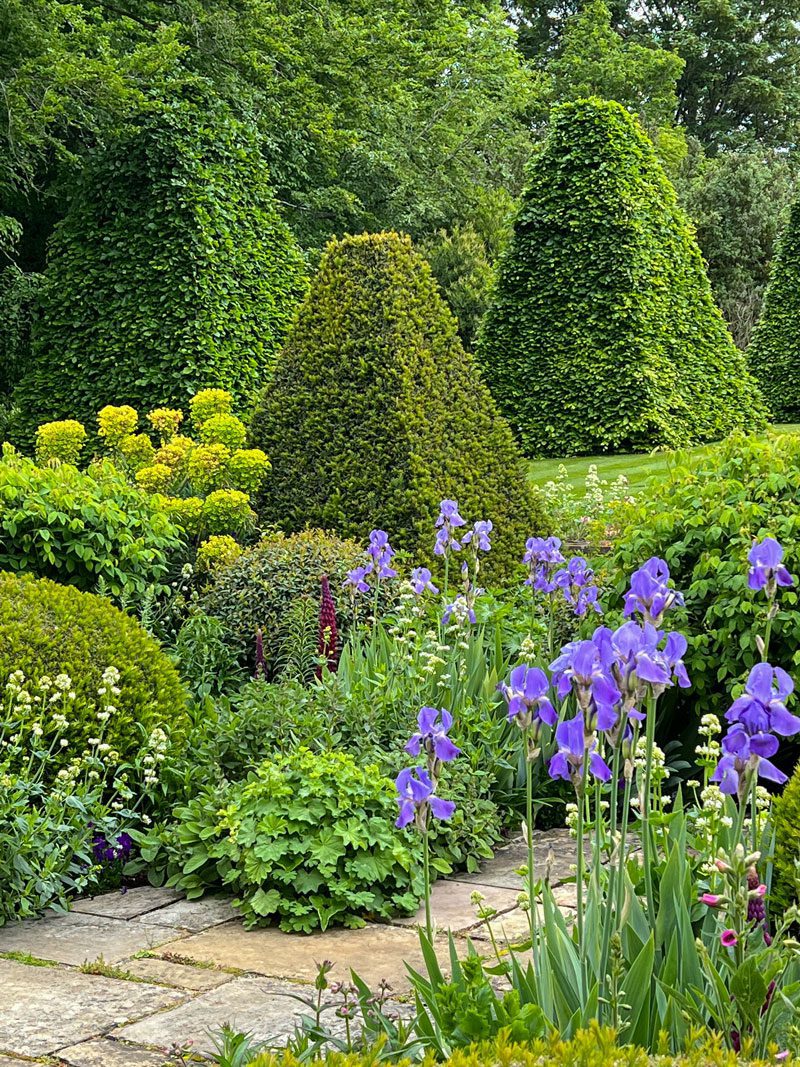
Carved out of undulating farmland, Rockcliffe presents such a quintessential English picture…the meticulously mowed-in-stripes-lawn (bordered by tall, clipped beech obelisks) as a long dramatic lead-in to the richly weathered golden Cotswold stone manor house.

The scene takes on a charming intimacy in the billowing and blousy garden at the front door which the owners pass through many times a day (and see from every angle).
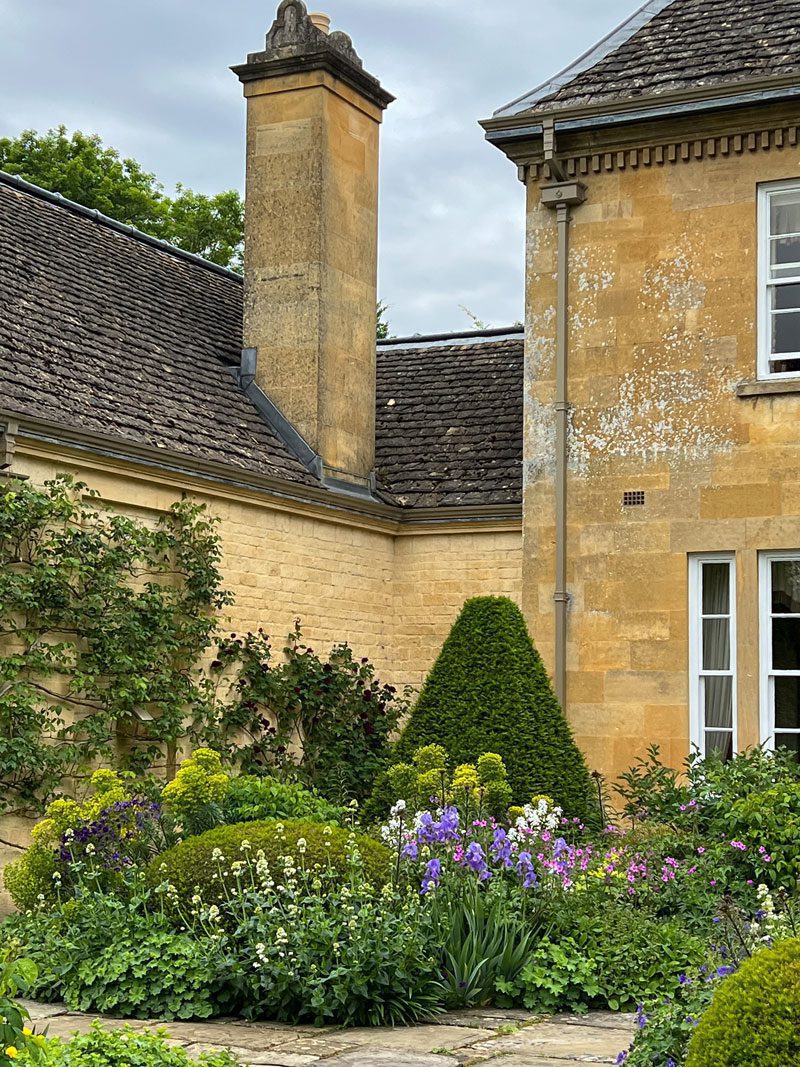
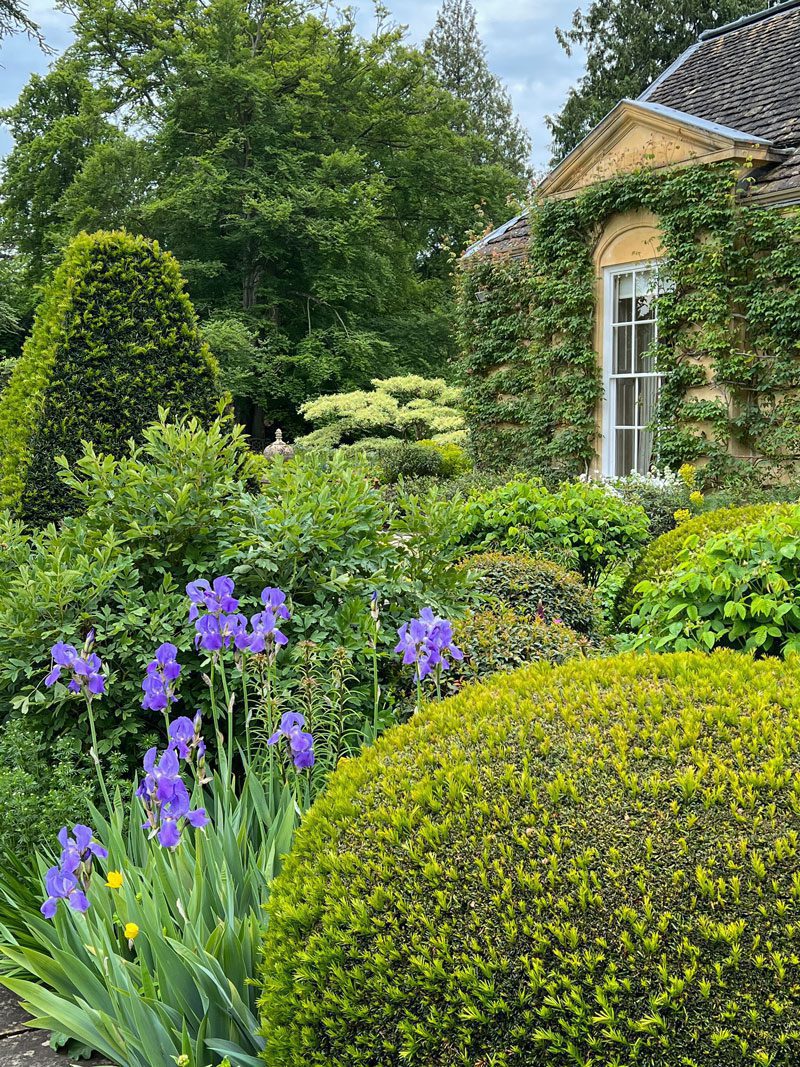
From the left side of the house, in the sunken garden off the terrace, one finds an intriguing pond surrounded by a cluster of my favorite trees, Cornus controversa ‘Variegata.’
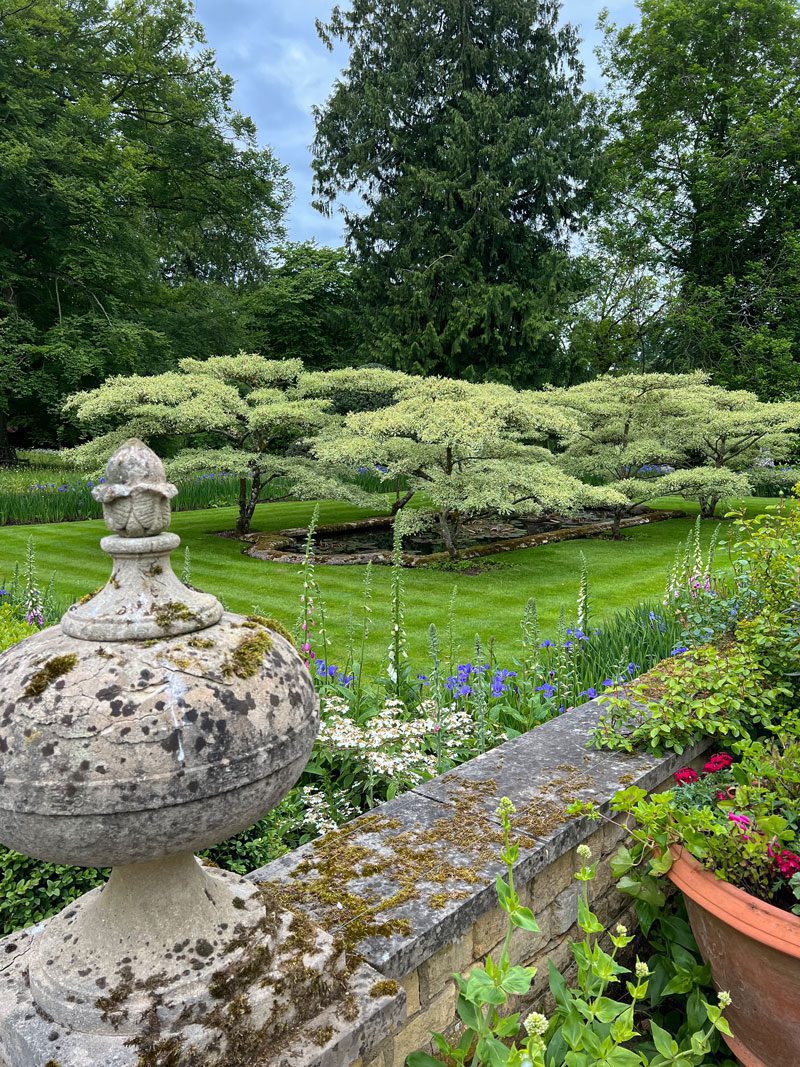
Over three decades, this garden has evolved in the hands of its talented owner; the results have inspired me in innumerable ways. I love reflecting back on Rockcliffe’s interconnecting landscapes…
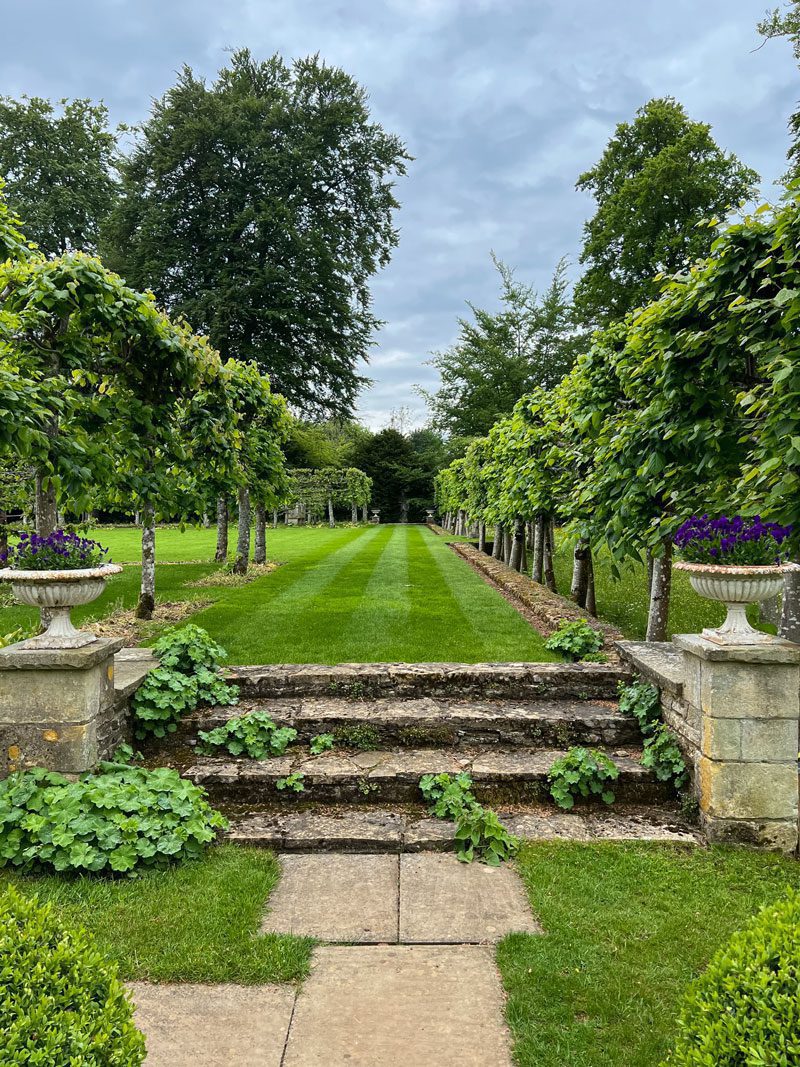
evergreen hedges (beech, lime, box and hornbeam are used throughout) and borders…
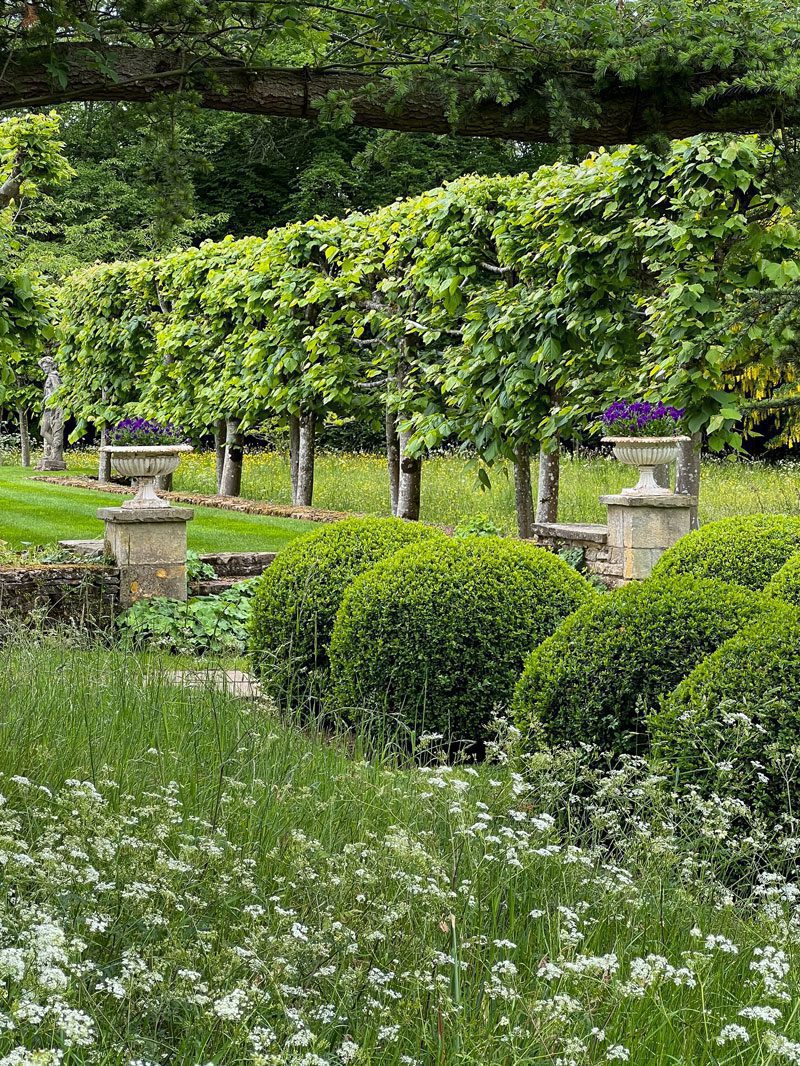
while well-considered paths of Yorkstone with their intriguing patterns provided design thoughts galore for Parterre.
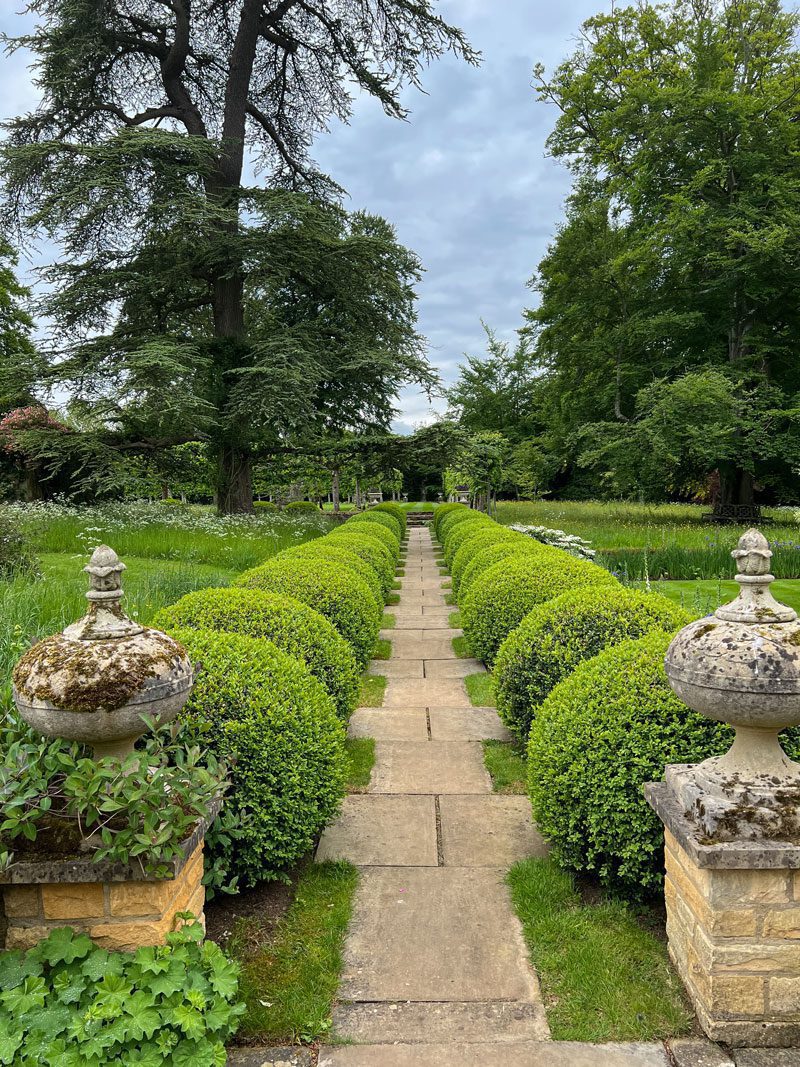
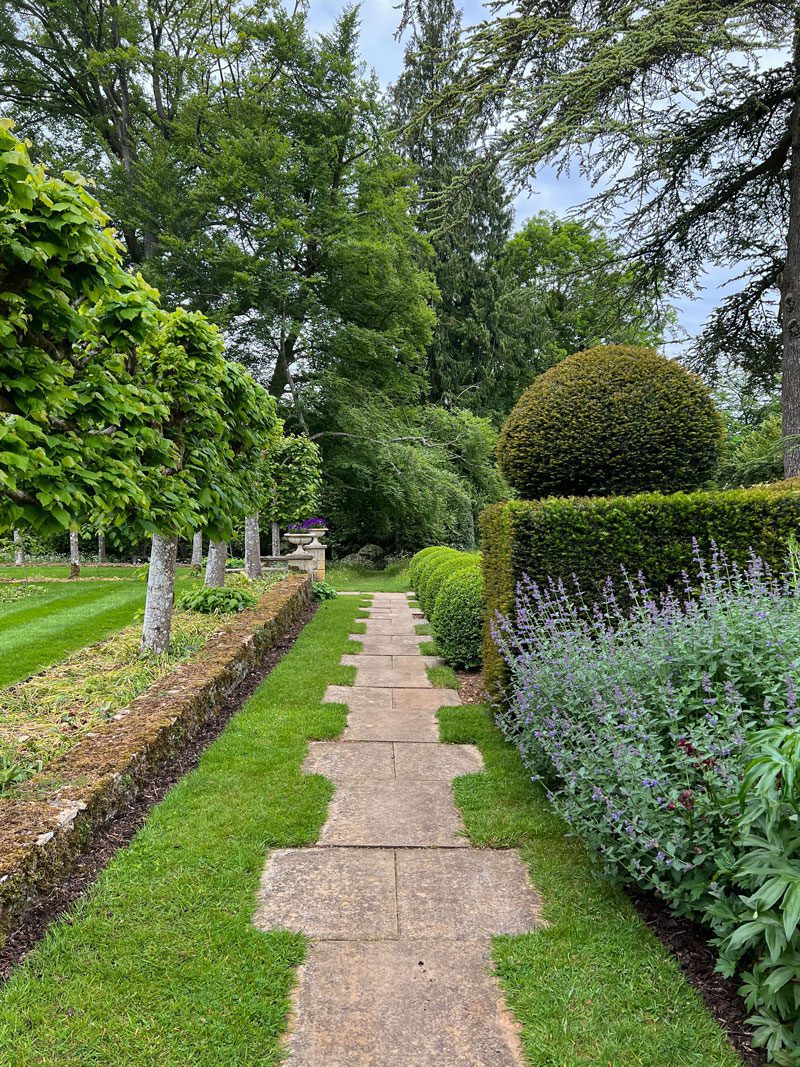
The same materials (yew, box, hornbeam) used for hedging also serve this garden well when pruned into shapes…from the most creative to the most traditional topiaries. Used as accents or punctuation points, they add structure to a planting scheme as well as interest in winter months (which are protracted at Rockcliffe). Here, pawn-shaped yew topiaries mark the crossing points of green paths.
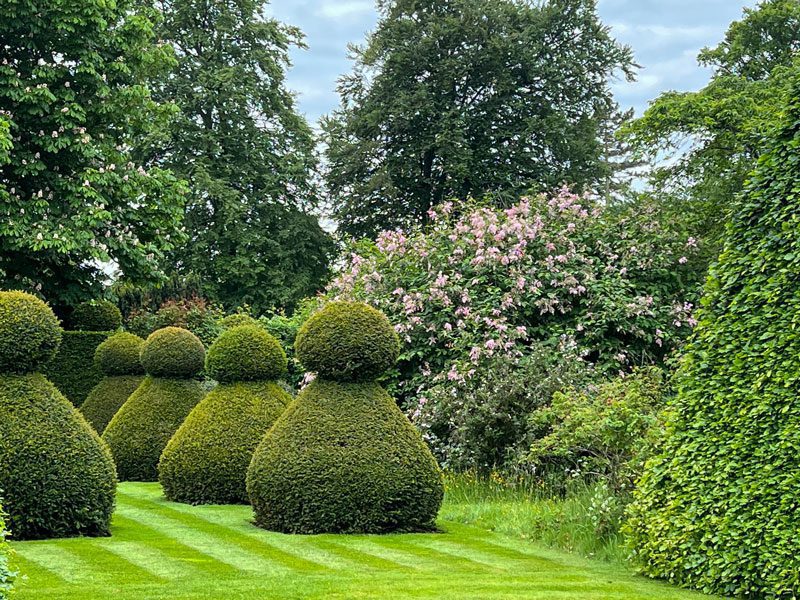
All encompass areas of plant profusion in controlled color schemes (ie. the blue/white garden and its pink counterpart). The pinks and reds truly caught my attention, especially the charming marbled groundcover, viola ‘Elaine Quin,’ sexy lupines, and the soft pink valerian…
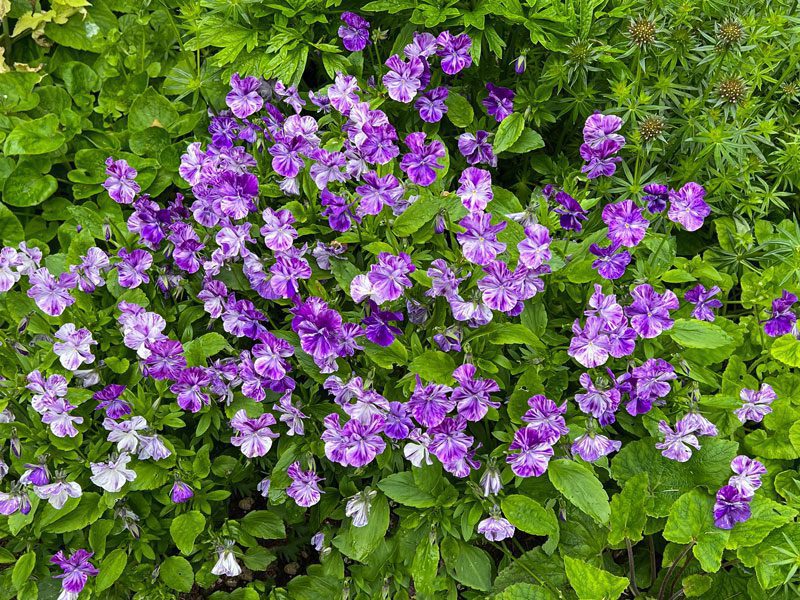
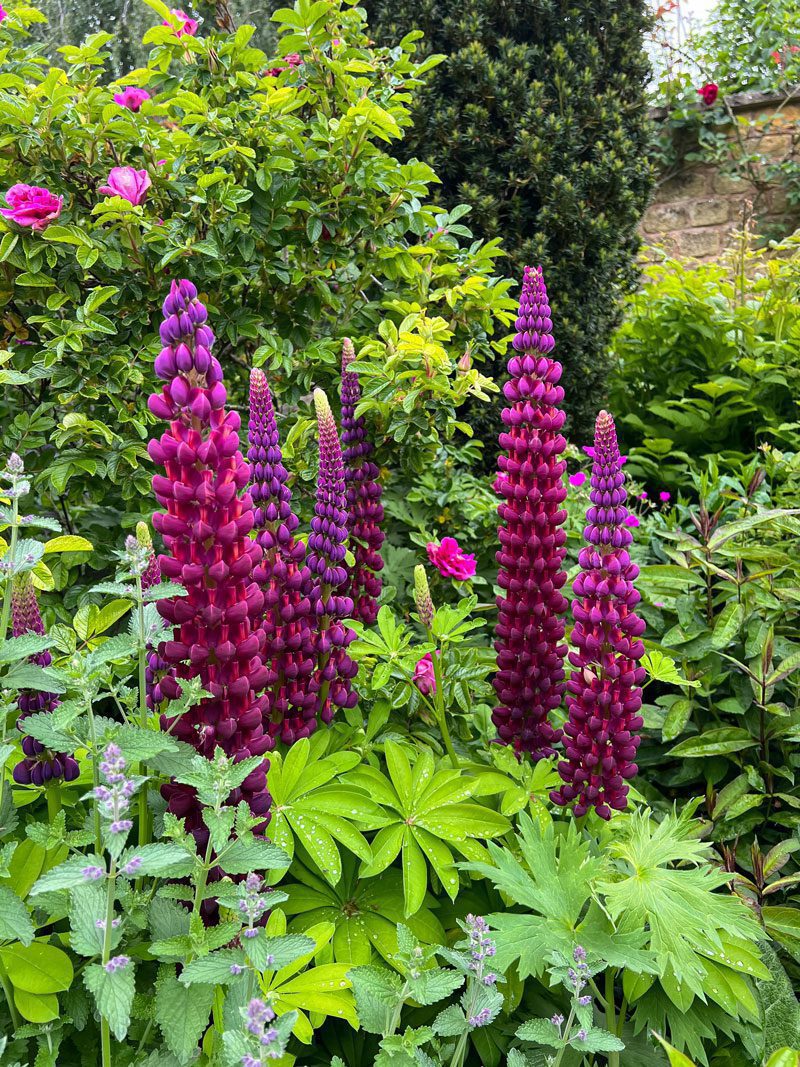
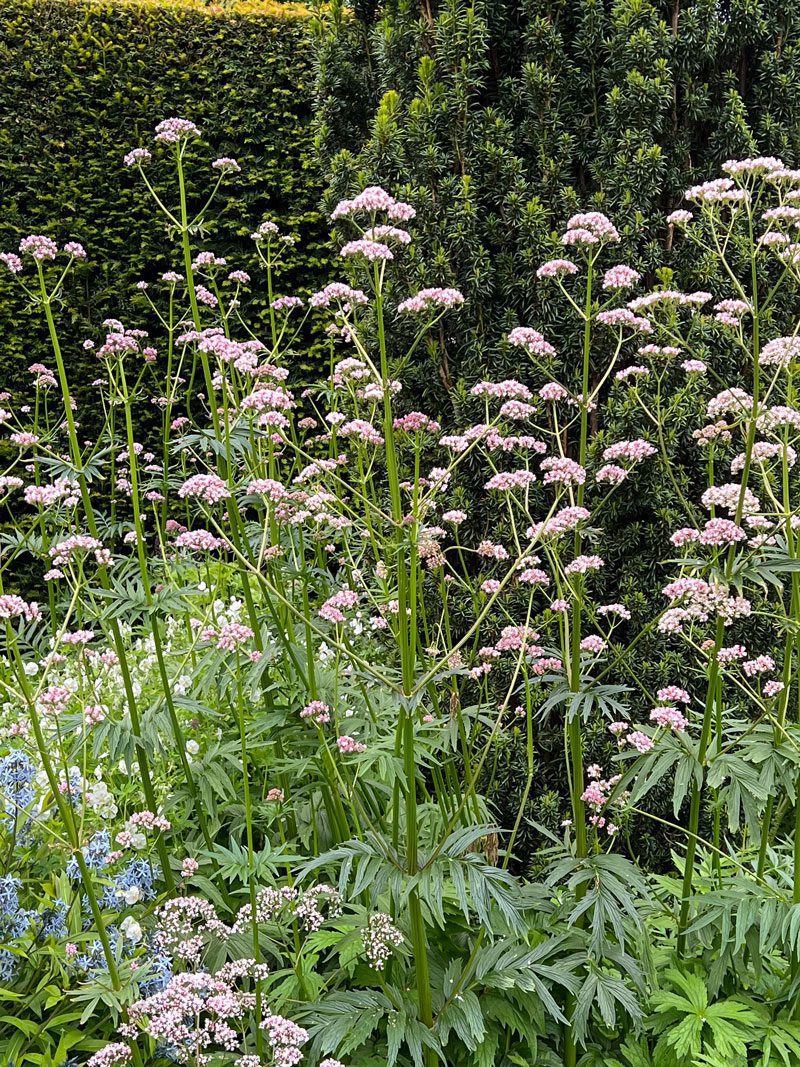
Thank you for joining me. Writing about gardens I love and admire is like visiting old friends…so heartwarming! And next week I’ll present Part 2 of this glorious Rockcliffe, to include a Millenium project (now 22 years old) that will take your breath away.







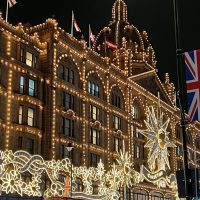
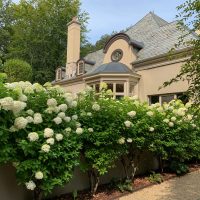
Bettie, this garden is amazing. How ever did you discover this hidden gem?
Bettie, all that you share takes your readers breath away. Such beauty
This will be on my 2024 trip to the UK. Absolutely perfect. Thank you for sharing, Bettie!
Beautiful house and enviable garden but living in the UK the most striking thing to me was the Union flag flying above the front door, very unusual.
What a beautiful garden. Thank you for sharing.
What an utterly exquisite garden! How many acres is it, Bettie? Obviously they have plenty of rain, lucky them to keep it so green! I cannot imagine how many full time skilled gardeners must be needed to keep this so marvelous! It is really a WOW!
Thank you so much. How wonderful to be able to see this.
“Valerian”…who knew…beautiful, etc. franki
I always look forward to these beautiful [photos and the accompanying notes attached to them. Keep p the good work. We love it!
Barbara K. Clement
How lovely to see this garden!.. thank you .. adore the established topiaries and general feel of the garden..
Thank you Bettie for another gorgeous visit to a stunningly beautiful place!
I may swoon!
Bettie this place is fabulous! Oh how I would love to have a property like this there’s nothing quite like these English homes in the countryside. I don’t think they have an equal there’s something special about them am I right?